On a lush farm in Gangannagudem, scented with nutmeg flowers and rustling with monkeys, Chaitanya Muppala listens for the song of the cacao trees.
“This is what chocolate making is about,” he says, as he plucks a ripe yellow cacao pod, knocking it firmly against a tree trunk to break it open and scoop out the beans, cradled in creamy pulp. He thoughtfully pops a few in his mouth, concentrating on their sweet, delicate flavour, then adds, “How do I take this fruit, and make it sing that song?”
Although India has been growing cacao for six decades, it is yet to be recognised as a source of fine flavour cacao. (This is cacao that is optimised for flavour and complexity as opposed to bulk cacao, which is optimised for yield and disease resistance.) With rudimentary fermentation and drying methods on farms, the delicate pod fails to live up to its full potential, which does not really matter to commercial chocolate makers, since they focus on sweetness and standardisation.
However, it matters to Chaitanya. The young scion of Hyderabad’s popular Almond House is on an ambitious quest: To create the best possible chocolate from Indian cacao trees.
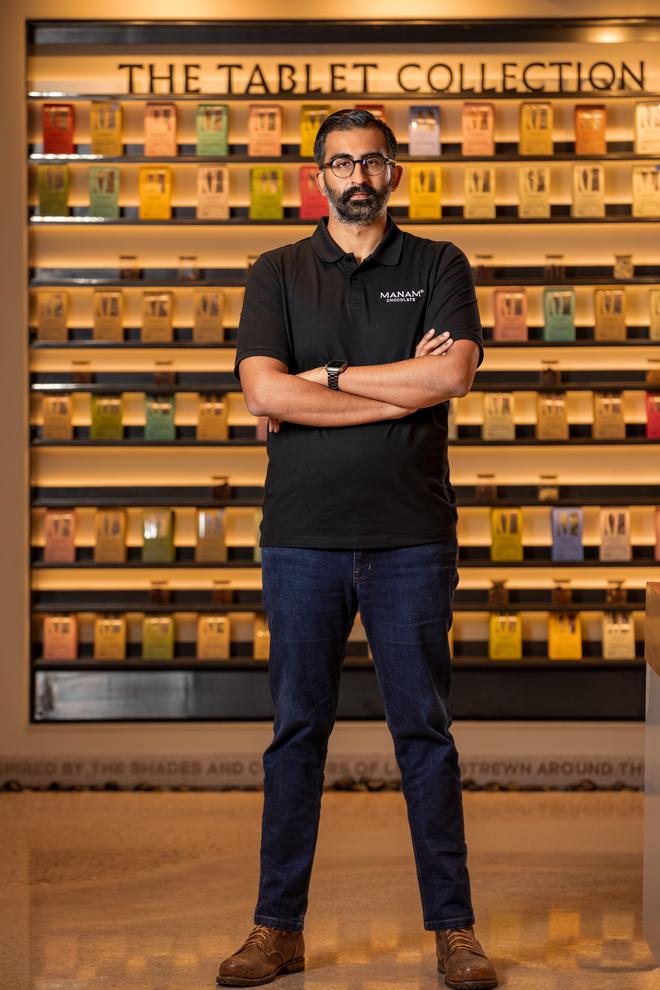
As we weave through Boyapati Venkateswara Rao’s farm in Andhra Pradesh’s fertile West Godavari district, bright with yellow, orange, and even purple pods, each with its own unique flavour, it becomes evident why his mission began here, three years ago, under the brand name Distinct Origins. And why it is culminating only now, with the launch of Manam, his first chocolaterie, in Hyderabad.
“With haphazard planting and intercropping, farms are now, well, an orgy of varietals,” says Chaitanya, as Boyapati, affectionately known as BVR, nods solemnly. Unable to identify the best possible strain of cacao immediately, they worked on improving on every technique and process applied, from bean to bar in an attempt to unlock its true potential.
To do that, Chaitanya partered with over 100 farmers like BVR, totalling over 1,500 acres of cacao farms in Andhra Pradesh’s West Godavari District. They grow cacao responsibly, intercropping it with coconut, bush pepper, aracanut, jackfruit etc. “We do natural farming here,” says BVR, poking around his vermiculture pit, as his grandson cradles two earthworms in his palm. “When you farm like this, automatically the end product is good.”
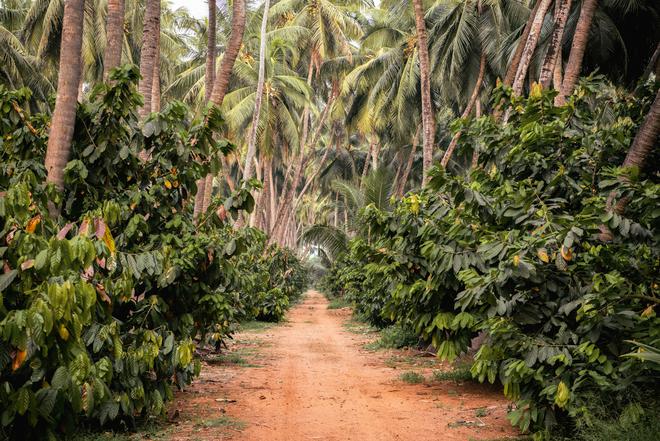
A short drive away, women in vivid saris and sparkling nose rings chat and sing as they break cacao pods at the Distinct Origins Fermentary in Tadikalapudi. In season, the women break about 15,000 pods a day. To put that in perspective, 30 fruits go towards making a single 80 gram chocolate bar.
“This is a 70-year-old tobacco warehouse that we cleaned and retrofitted into what we think a fermentary should be,” says Chaitanya, walking through the large, airy space. He pulls out his phone to explain their digital system, which enables the procurement and processing. “It runs the operation: everything in the fermentary is tracable to the plot of land on which it was grown and who grew it,” he states.
From when pods are harvested on the farm, they are tracked. “Everything sits on a system that is blockchain-enabled. We can trace the beans from each farm, and get details on yield, farming practices, multicropping,” says Chaitanya, adding, “We are trying to build data so we can deduct what may be useful in our hunt for a golden Indian varietal. A genetic expression that we desire in flavour...”
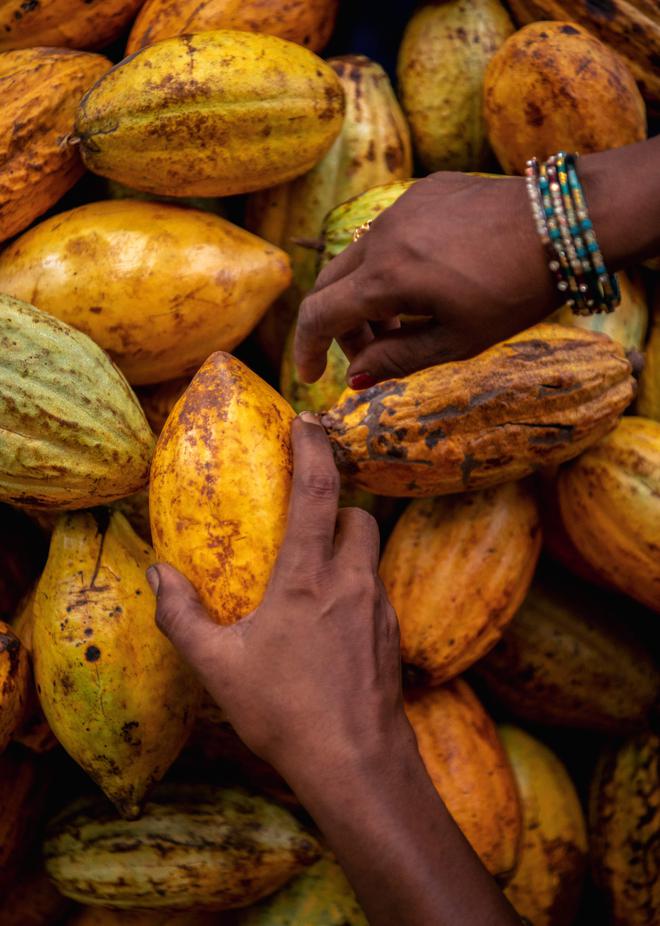
This also enables them to create their distinctive single farm bars, where flavours are influenced by the geography, soil, and crops grown beside the cacao trees.
For example, cacao farmed by D Hari Krishna is crafted into a 60% dark milk chocolate, which has a rich flavour profile with notes of cream. While the cacao farmed by G P Rao is a 62% dark chocolate with a fruity flavour profile with notes of berry and sugarcane. QR codes on the chocolate packaging encourage customers to access this information and appreciate the journey.
While there was initial hesitation among farmers to adapt to the new system, the fact that Distinct Origins’ process enables quicker and higher payments, while sparing them the bother of fermentation and drying on the farm, meant that more and more farms have come on board.
Being in control of the fermentation allows Chaitanya and his team to experiment. On the day we visit, the heady scent of ripe pods is laced with aroma of local Chakkarkeli bananas, which are being sliced and mixed in. “It’s our creative fermentation,” smiles Chaitanya, adding that they also create batches with locally harvested jackfruit and Pedda Rasalu Mangoes.
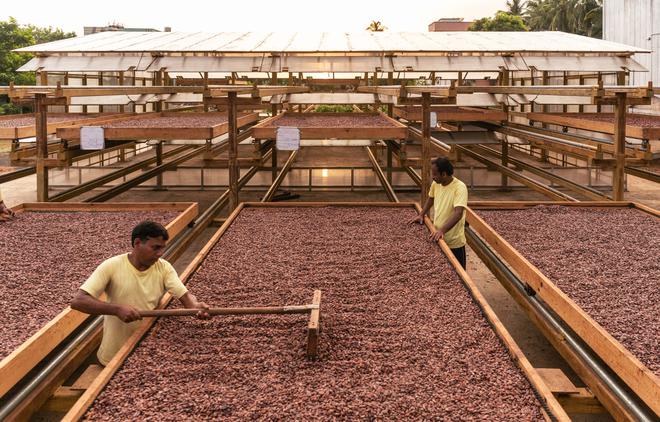
Outside, the cacao beans dry slowly on movable racks. “We expose the beans to soft sunlight at dusk and dawn. We dry them in the shade and sun, as slowly as possible so they dry from the inside,” says Chaitanya.
We follow the journey of the beans to Hyderabad, and the Manam chocolaterie, which Chaitanya calls their karkhana or workshop. Spread over 10,000 square feet it is wrapped in the warm scent of roasting cacao. The boutique underlines how versatile chocolate can be: there are clusters, barks, thins, macarons, spreads and gelato, accompanied by chocolate on tap.
Being able to control all the stages from farm to bar enables the chocolatiers at Manam to play around with textures and natural flavours, finding ways to heighten the natural pleasing complexity of cacao. “We stay away from what is industrially done,” says Chaitanya, “As an Indian craft chocolate we want to keep the unique notes.”
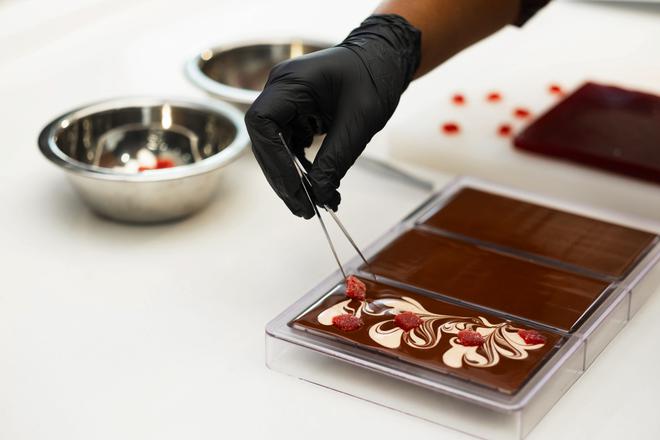
Conceptualised as ‘annual editions’, since terroir, temperature and rainfall can alter flavour every year, Manam has over 45 categories reflected in 250+ products. There are crunchy snacking nibs, for instance, crafted from roasted beans. And freshly bottled hot and cold chocolate. Willy Wonka-style we wander around trying bon bons, cookies, and addictively chewy dehydrated orange peel nestled in a chocolate shell.
“People tend to forget that chocolate comes from a farm,” states Chaitanya, as we settle down at the Manam cafe. Explaining that he estimates there are only about 600 craft chocolate makers around the world, Chaitanya hopes that much of their proprietary technology and processes, some of which have been cobbled together by good old fashioned ‘jugaad’’, could potentially influence how craft chocolate is made around the world, given that it is still work in progress for everyone.
“We are not making chocolate elitist. We are reminding ourselves that it is a magical ingredient,” he says, looking over fondly at his cacao tree, which was transplanted from the farm to the cafe.
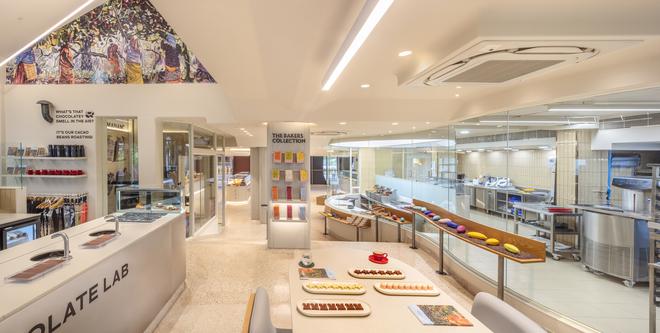
As if on cue, the sound of a flute meanders around the cafe. “That’s our gelato maker, Ajay, who’s also a flautist,” says Chaitanya. Ajay seats himself beside the cacao tree and begins to play to it, as Chaitanya continues, “The tree was not doing too well when we brought it from the farm. So now, we’re trying music therapy.”
“Manam means ‘us’ in Telegu,” Chaitanya continues, explaining how the chocolate is the work of many hands, from farm to flute. “Manam is a nod to our Indian roots — we see ourselves as farmers, fermenters, chocolate makers, chocolatiers and story tellers. We are a collection of craftspeople who keep solving problems, and keep learning.”







